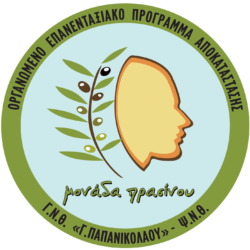Professional rehabilitation of people with mental health problems or even part-time work in the free labor market is one of the main problems of mental health professionals, as the “stigma” of mental illness continues to exist as a social marginalizing factor and isolation of these individuals.
At the same time, the reduced ability to acquire formal qualifications and the limited skills development as a result of chronic mental illnesses (relapse, reduced functionality, social isolation, etc.) further reduce the possibility of penetrating into the labor market as well as accepting mental health patients in the already structured social and labor relations of the free market. Nevertheless, studies highlight the enormous benefits to the quality of life of mentally ill people from taking up work or even employment.
The respond to these difficult conditions are the organized rehabilitation programs aiming at creating and strengthening employment opportunities for people with mental disorders who live in the community in the psychosocial rehabilitation structures of PHT. (boarding houses, hostels, sheltered apartments) but continue to be monitored therapeutically by mental health professionals. The ultimate goal of the programs is to promote mental health patients in the labor market.
Under this point of view, the Green Unit operates an organized therapeutic-reintegration program involving 33 mental patients. These people are employed in activities developed by the Green Unit, with services related to its operation, which are provided both to the PHT and its out-of-hospital structures (Hostels, boarding houses, etc.).
Each member of the Organized Program of the Green Unit is trained to participate progressively and alternately in all work by department. Through this process the ability of each participant to “choose” and “satisfy” is also detected so that the work responds as much as possible to the wishes and needs of the individual.
An important concern for the Green Unit is the development and maintenance of a therapeutic environment that enhances the creativity of individuals, with responsible and voluntary employment through the acquisition of team spirit and the development of social, individual and work skills.
Finally, a success factor is the evidence from the intermediate and final evaluation of the course of the employees, which are used in order to identify and eliminate as far as possible any negative factors of influence and on the other hand to enhance the positive interventions that have produced the desired results .
In this context, the Green Unit has attempted to create a flexible model for the operation of the programs so as to include in them any voluntary participation of the employees in the completion of various organized tasks undertaken by entities related to the aforementioned actions.
The positive effectiveness of the organized rehabilitation programs of the Green Facility has also been recognised by the PHT Administration, which has approved the budget for the continuation of their operation.
